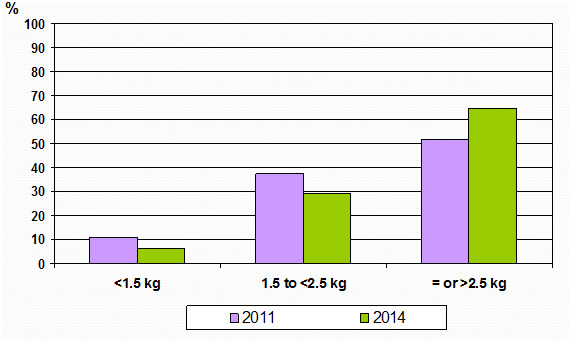
Proceeding Volume 5 Issue 5
Reducing Neonatal Mortality at Satkhira District Hospital by Quality Improvement Interventions
Shamsur Rahman,1
Regret for the inconvenience: we are taking measures to prevent fraudulent form submissions by extractors and page crawlers. Please type the correct Captcha word to see email ID.

Tazul Islam,2 Khan Golam Mostafa,3 Sanjoy Kumar,4 Abdul Mannan,5 Motiur Rahman,6 Abid Hossain Mollah7
1Consultant Pediatrics, District Hospital, Bangladesh
2Chief Advisor, JICA, Bangladesh
3Associate Professor & Head Of Department of Peadiatrics, Satkhira Medical College, Bangladesh
4Associate Professor of Neonatalogy, Bagabanghu Sheikh Mujib Medical University, Bangladesh
5Professor of Neonatalogy & Chairman, Department of Peadiatrics, Bagabanghu Sheikh Mujib Medical University, Bangladesh
6Professor & Head of Department of Peadiatrics, Popular Medical College Hospital, Bangladesh
7Professor of Neonatalogy & Head of Department of Peadiatrics, Dhaka Medical College Hospital, Bangladesh
Correspondence: Shamsur Rahman, Consultant Pediatrics, District Hospital, Satkhira, Bangladesh
Received: October 30, 2016 | Published: November 4, 2016
Citation: Rahman S, Islam T, Mostafa KG, Kumar S, Mannan A, et al. (2016) Reducing Neonatal Mortality at Satkhira District Hospital by Quality Improvement Interventions. J Pediatr Neonatal Care 5(5): 00197. DOI: 10.15406/jpnc.2016.05.00197
Download PDF
Background
- District Hospital, Satkhira is a 100 bedded hospital with 10 pediatric beds.
- Pediatric ward is managed by consultant pediatrics, MO, 8 SSNs with other support staff.
- JICA is providing technical support to improve quality of services at District Hospital, Satkhira since 2012.
QI interventions undertaken in Satkhira DH
Staff training
- Neonatal resuscitation.
-
- Essential newborn care.
- Emergency Triage Assessment and Treatment (ETAT).
- Infection control.
- Kangaroo Mother Care.
Protocolized management of neonatal sickness
Renovation of hospital by government
Health education to the attendants
5S-Kaizen-TQM
Regular analysis and sharing of data with pediatric service providers
Initiatives taken after introduction of 5S-Kaizen-TQM in pediatric ward:
- Developed baby management corner.
- Visitor control (one attendant for one baby).
- Shoe free ward.
- Health education to patients’ attendants (hand washing, exclusive breast feeding etc.).
- Central oxygen supply system.
- Updated neonatal register.
Objective of data collection and analysis
Objectives
- To assess the impact of QI interventions on neonatal admissions and outcome at district hospital, Satkhira.
Data collection
- Data on neonatal admissions (case by case) were collected from the pediatric ward register from March 2011 to December 2014 and analyzed.
Results
Total neonatal admissions in 2014 was 2,632, which is about 48% higher than 2011
The main causes of hospital admissions were
- Perinatal asphyxia (39.6%).
- Prematurity and low birth weight (16.3%).
- Pneumonia (11.9%).
- Sepsis (10.0%) (Figures 1-11).

Figure 1 Trend of neonatal admissions: Average per month (No.).

Figure 2 Neonatal admission (%) by age: 2011 & 2014.

Figure 3 Admission body weight of neonates (%): 2011 & 2014.

Figure 4 Causes (%) of neonatal admissions: 2011 & 2014.

Figure 5 Trend of overall neonatal case fatality rate: 2011-2014.

Figure 6 Causes of neonatal death: 2014.

Figure 7 Disease specific case fatality rate: 2011 & 2014.
There was only one case of RDS in 2011

Figure 8 Trend of disease specific CFR (%): 2011-2014.

Figure 9 Distribution of age as a proportion of all deaths (n=303): 2014.

Figure 10 No. of admissions and % of neonates referred out: 2011-2014.

Figure 11 % of cases referred out to other hospital by diagnosis: 2011 & 2014.
Future plan
- Initiate SCANU at the district hospital (work is going on).
- Initiate KMC in pediatric ward (staff have been trained and service will start soon).
- Orient the Upazila doctors and nurses for emergency management of neonates and timely referral (initiative undertaken).
Acknowledgments
Conflicts of interest
Author declares that there is no conflict of interest.

©2016 Rahman, et al. This is an open access article distributed under the terms of the,
which
permits unrestricted use, distribution, and build upon your work non-commercially.


